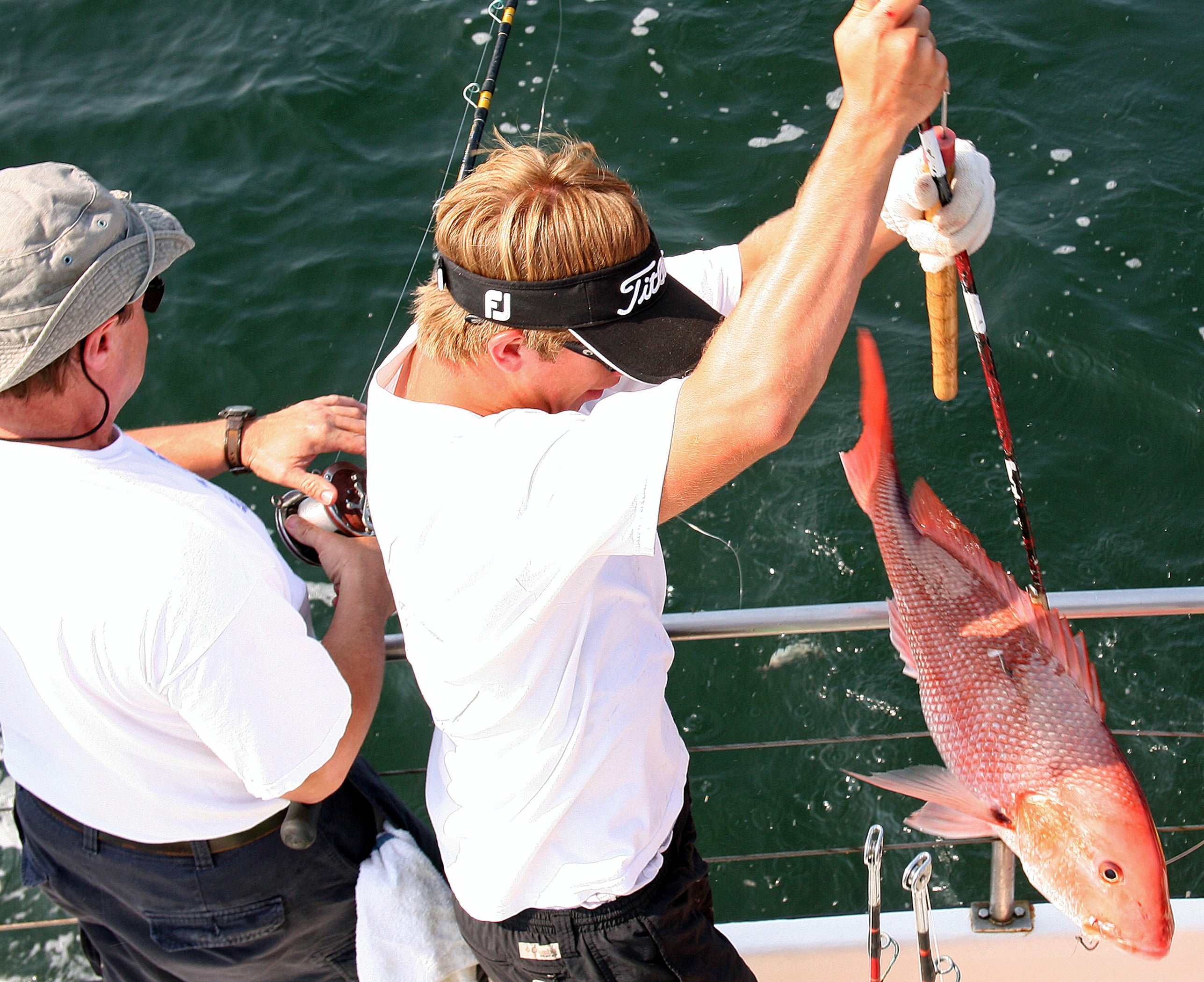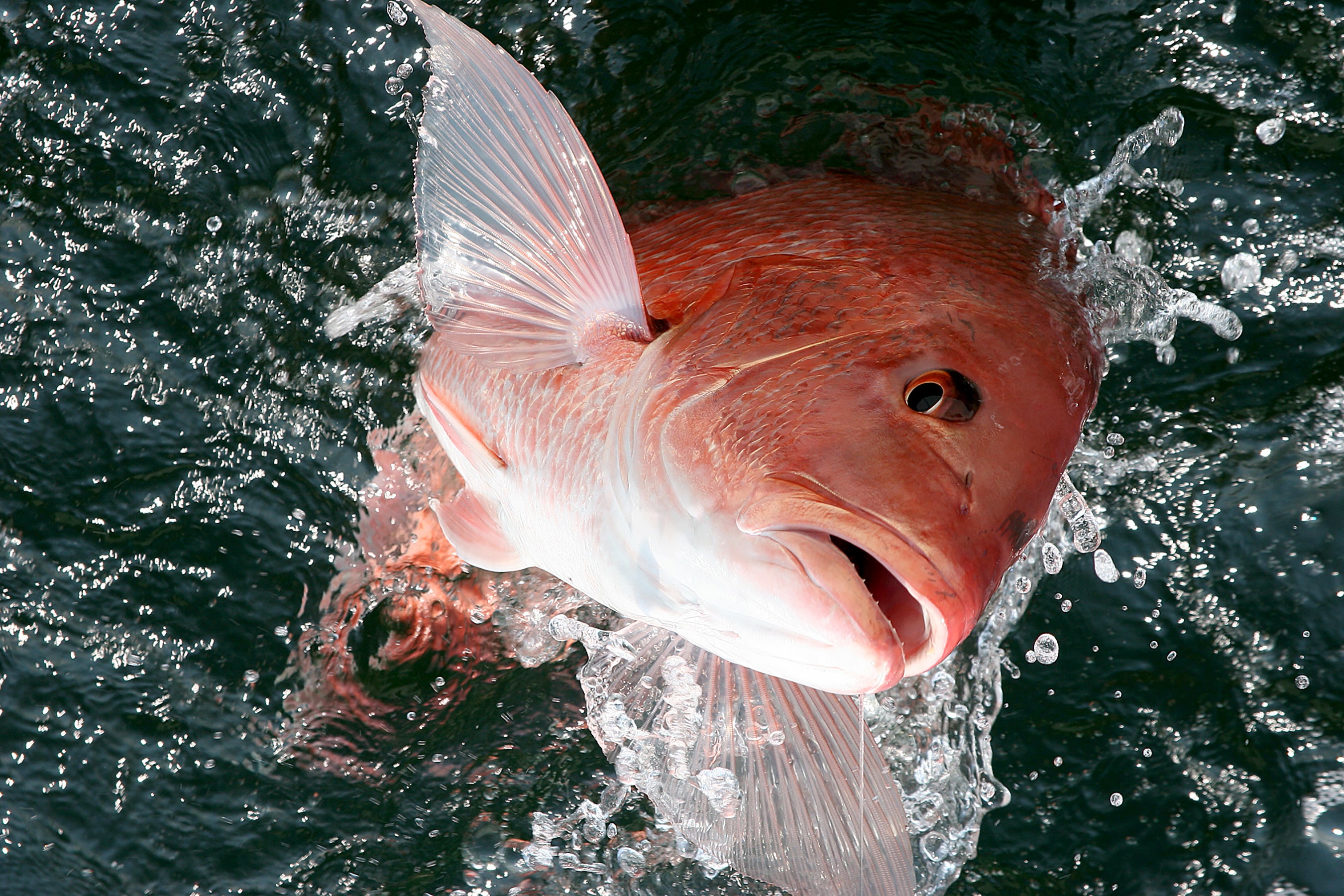By DAVID RAINER, Alabama Department of Conservation and Natural Resources
Alabama’s 2022 red snapper season for private recreational anglers will follow the same schedule as the 2021 season, but Scott Bannon, Director of the Alabama Department of Conservation and Natural Resources (ADCNR) Marine Resources Division (MRD), would be surprised if the 2022 season closes in similar fashion.
The 2022 season opens the Friday (May 27) before Memorial Day and runs each extended weekend from Friday through Monday until Alabama’s annual quota is projected to be met. Right now, NOAA (National Oceanic and Atmospheric Administration) Fisheries has not released the quotas for 2022.
“We anticipate our quota for this year will be similar to last year’s, which was 1.12 million pounds,” Bannon said. “If the fishing effort is ‘normal,’ and the weather is favorable, we’ll fish probably 30 to 40 days, depending on the effort. We encourage people that if the weather is bad, don’t go. Wait until the weather is better.”
While this year’s season is projected to last around 40 days, the 2021 season was open for 124 days due to several factors.
“Early in the peak season (middle of the summer), fishing conditions were problematic for a lot of people due to tropical weather, especially the smaller boats, so the effort was not what we expected early in the year,” Bannon said. “Then as you get later in the year, people are drawn into other activities. School is in session. Your kids are participating in school sports. Hunting season becomes a priority for many people later in the year. So as long as we have quota, we will remain open. It just worked out last year that we closed the last Monday of the year in December.”
Despite higher fuel prices, Bannon thinks if the weather is good in the upper Gulf of Mexico, red snapper anglers will be on the water.
“If the weather is perfect and the effort is high, I think it could be like 2020,” he said. “When COVID-19 first hit and only outdoors activities were considered safe and healthy, a tremendous number of people went fishing because they couldn’t do anything else.”
The 2020 season lasted 44 days, and the 2019 season was open 35 days with similar quotas.
“Once we get through the peak summertime effort, it really levels off,” Bannon said. “It has spiked early and flattened out for the past several years.”
Anyone interested in the 2021 Snapper Check numbers can visit www.outdooralabama.com/mrd-fisheries-section/red-snapper-faqs for details.
The Scientific and Statistical Committee (SSC) of the Gulf of Mexico Fishery Management Council (Gulf Council) recently completed its first meeting of 2022, and the results were mixed, according to Bannon.
The SSC voted to change the red snapper overfishing limit from 25 million pounds to 18.9 million pounds. However, the allowable biological catch (ABC) was increased from 15.1 million pounds to 16.3 million pounds.
“Those recommendations will be presented to the Gulf Council,” Bannon said. “The Gulf Council will set the annual catch limit (ACL), which can be up to the ABC, or it can be lower. They’ll probably have discussions about it at the April (4-7) meeting in Gulf Shores (The Lodge at Gulf State Park).”
Alabama’s federally permitted charter (for-hire) fleet operates under the federal regulations and not the state-managed system that governs anglers fishing from state-licensed-only charter vessels and private recreational vessels. NOAA Fisheries has not set the federal for-hire season, but Bannon expects a June 1 opening with a season length of 62 or 63 days. The charter season is open seven days a week until it closes.
“The federally permitted charter boats are moving to an electronic reporting system, similar to Snapper Check,” Bannon said. “They have to report their catch for every species electronically after every trip. That’s going to really fine-tune the data for the federal for-hire boats, and it gives them, potentially, the opportunity to add more days to the season or additional days later in the year if they don’t reach their quota.”








